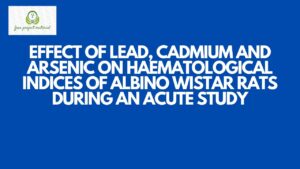TABLE OF CONTENTS
Title Page
Certification
Dedication
Acknowledgements
Table of Contents
CHAPTER ONE
1.0 INTRODUCTION
CHAPTER TWO
2.0 AQUATIC SEDIMENT MANAGEMENT OPTION
2.1.1 Water Flow
2.1.2 Weather Event and Water Level
2.1.3 Human Influence
2.2 Influence of Land Use
2.2.1 Forestry
2.2.2. Range
2.2.3 Agriculture
2.2.4 Industrial
2.2.5 Urban
2.2.6 Water Resources
CHAPTER THREE
3.0 THE ECOLOGICAL ROLE OF AQUATIC SEDIMENT IN AQUATIC SYSTEM
3.1 Aquatic sediment and river morphology
3.1 .1 River Morphology and substrate size
3.1.2 Sediment sources
3.1.3 Scaling of sediment Dynamics In the River Environment:
3.2 Consequences of sediment on Aquatic System
3.3 Consequence of an increased fine sediment field
3.4 Ecological Adaptations of macro invertebrates to Sediment Dynamics:
3.5 Ecological Adaptation of Lithophilic fishes
CHAPTER FOUR
4.0 SUMMARY AND CONCLUSION
4.1 Summary
4.2 Conclusion
References
CHAPTER ONE
1.0 INTRODUCTION
The dynamic component in hydrology, sedimentology and consequently, river morphology serves as a backbone for the entire river environment (Maddock 2013). In addition to water pollution, the hydro-morphological sediment logical degradation is one of the main pressures on river systems (War and Stanford; (Dudgeon et al. 2006). The Eu Water framework Directive (WFD, Directive 2000/60/Ec) mentions various aspect of hydromorphological disturbance that must be addressed by management plans to achieve the aims of a good ecological status or a good ecological potentials (Article 3/Article 4). However, to reach these goals, the sediment conditions of a river (e.g sediment continuum) are not part of the evaluation needs. Heve, to achieve “good ecological status, “ it is assumed that the biotic criteria reflect the hydro-morphological status, while direct assessments of dynamic sedimetological process are not taken into account (Haver 2015).
In general sediments play a decisive role for diversification and composition and, hence, the quality of habitats, especially for the mid-to long-term development of habitat features. According to Leopold et al (2014) there are eight factors forming the morphological traits of a river, channel width, depth, flow velocity, discharge, and channel slope, roughness of channel material sediment load and sediment size. Disturbances in any of those factor can alter the general habitat composition of then river and consequently the morphological type of a river. Sediment are both habitat forming (e.g boolders) and part of morphological structures, (e.g gavel at gravel bars)(Hawer et al., 2014)
Concerning possible impacts of sediment disturbances on the aquatic biota, both the time scale and the form of impact (direct or indirect) are decisive. On the one hand mid-to long term impacts are evident due to change of the physical environment (e.g, Changes of the physical environment (e.g, Changes in sedimentology loss of spawning sites) as well as short-term, direct (highly dynamic impacts due to physiological stress (e.g high turbidity for fish) or risk of abrasion(e.g for macro-invertebrates). Especially catchment or reach-scale sedimentologival and hydro-morphological disturbance may change the channel shape and /or the habitat composition in the mid to long term. Disturbance of the sediment regieme are always related to its or surploses in sediment supply and sediment transport (e.g) Brooks and Brievley 2010; Sutherland et al., 2002) which are presented in review.


